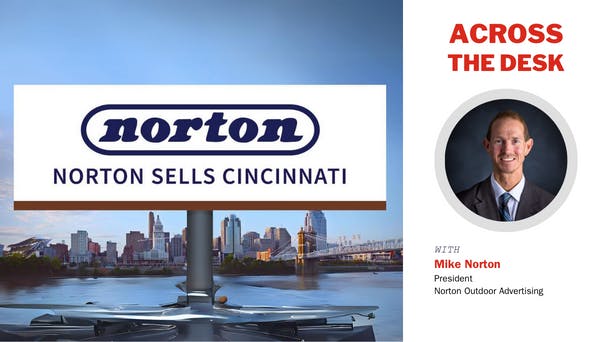Every month, OAAA’s editorial team sits down with an industry leader to discuss the latest insights, trends, and best practices for the OOH industry

What excites you about OOH right now?
What excited me most is the increased acceptance of OOH as a foundational piece of an omnichannel effort by more marketers and advertisers, in more verticals. I think OOH is finally emerging from being perceived as merely an “awareness medium” to one that is being more appropriately valued. Yes, we provide large scale awareness, but we also provide the ability to target audience segments and provide contextual and timely messaging that really does move the needle for brands, businesses and organizations across the country.
What message do you have for brands that haven’t bought OOH before?
Great news! There’s still time to jump on the bandwagon! As more channels, apps and streaming services compete for viewers and consumer attention, our value proposition continues to increase. We are the last and only true mass reach medium. With the value that OOH provides as part of an overall campaign, in addition to what we can do for a brand’s digital and social engagement, there has literally never been a better time to start using OOH.
What’s the next big thing for OOH?
I believe the incorporation of OOH in omnichannel efforts, as I previously shared, is going to propel OOH to new heights. The real growth in this arena will come from automated and programmatic channels, however there are still hurdles to getting there as an entire industry. One key hurdle is having audience measurement that is universally accepted as the input.
Another is to have screen operators of all sizes via their SSPs, truly connected to as many DSPs as possible. There are too many walled gardens still in existence, as well as a bit of a “knowledge bandwidth” issue for some of the smaller operators, admittedly including my own. My company, for instance, doesn’t have the resources to create our own scheduling software that can connect to the DSPs, and there are too many pain points in transferring over our digital billboards to a 3rd party software. I would like to see the scheduling software technologies that are utilized by digital signage manufacturers make it easier to “connect the tubes.” My dad, Tom Norton, has compared this to all ski manufacturers using the same bindings, so all skis connect to every skier’s boots. This is needed to really put OOH in the best position to succeed in the digital world.
Lastly, continued improvements in attribution for our medium would close the loop. Right now, as I understand it, attribution for OOH is essentially a separate, and expensive for most, effort. If we have the ability to track mobile devices in the viewshed of an OOH display, it seems as though we should have the ability to provide the same or very similar attribution (CTR’s, purchases, etc.) as a Facebook campaign.
Why is OOH advertising so important for brands to effectively engage in local communities, and what measurable impact have you seen from these campaigns in terms of results?
There is no better way for a brand to engage in a local community than to literally be a part of it. As Rick Robinson has often said, “we are in the peoples’ space.” If you want to appear as though you care about a community, put contextually relevant creative in that community. If it makes sense for your brand and your effort, be funny, but always be true to your brand and sensitive to the sensibilities of all who will see your message. Every community is unique and both regional and national brands can do a better job of connecting in local communities by leaning on their partnerships with local operators, and working together to find the right area and message. For example, events like Opening Day and Oktoberfest are very big in Cincinnati, and if I see a brand celebrating that with me it gives that feeling of “they get it, they get me.”
In terms of specific results, we often aren’t privy to specific KPI results for most advertisers. However, one great local example is the Ohio Renaissance Festival. The previous festival owner didn't believe as strongly in OOH, so after using it successfully for a couple of years, they did not invest in our medium for 9 straight years. However, new Festival ownership knew the value of OOH, and went back to using OOH, and immediately experienced a 20% increase in YOY attendance!
Another great example is that our displays, as well as many other OOH operators throughout the country, have been credited with finding missing and abducted persons, apprehending criminals, finding kidney donors, and a wide variety of other outcomes that benefit our communities. Helping people and companies succeed is wonderful, and it’s what allows us to stay in business, but also saving or impacting a life in a meaningful way is amazingly humbling.

